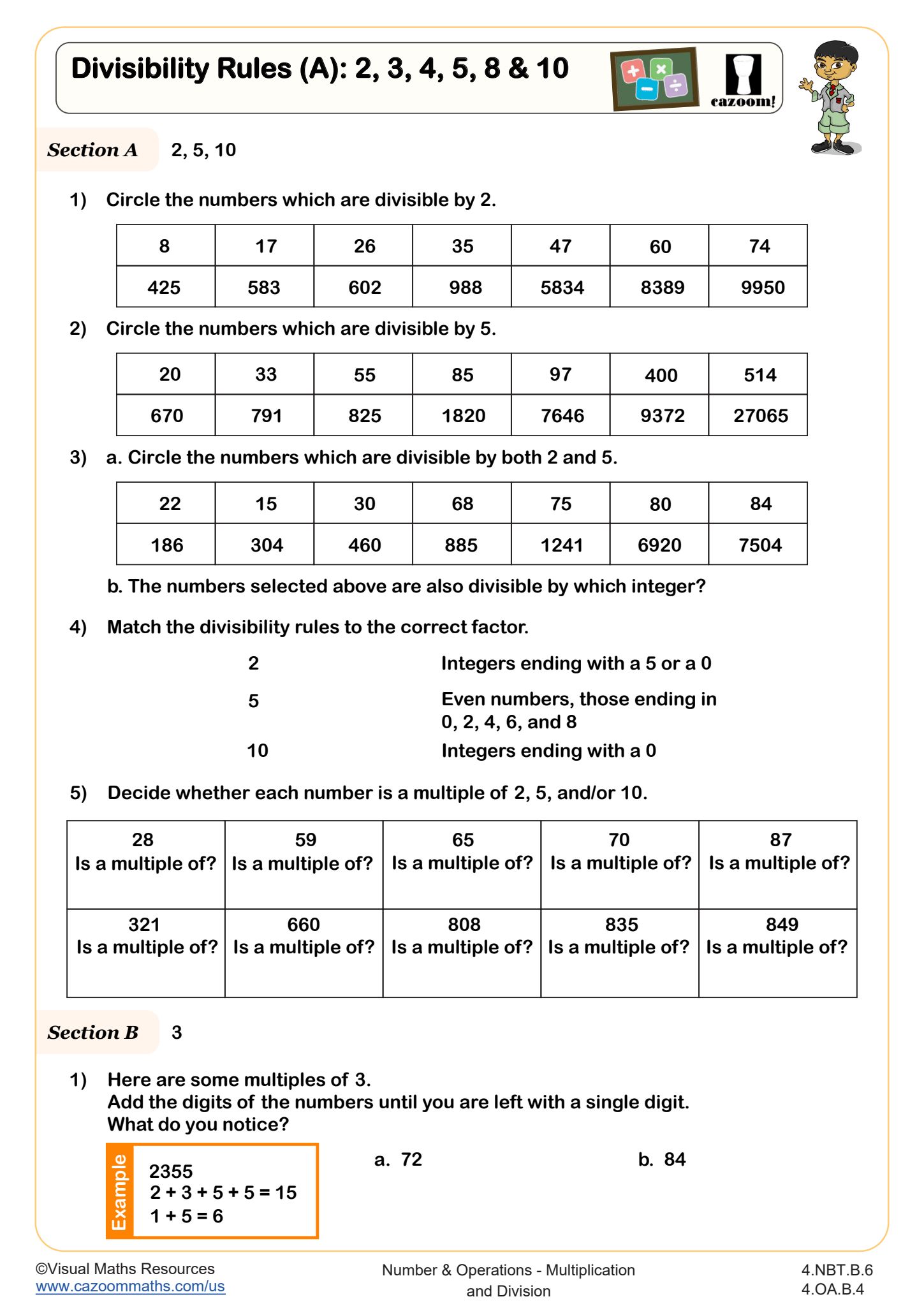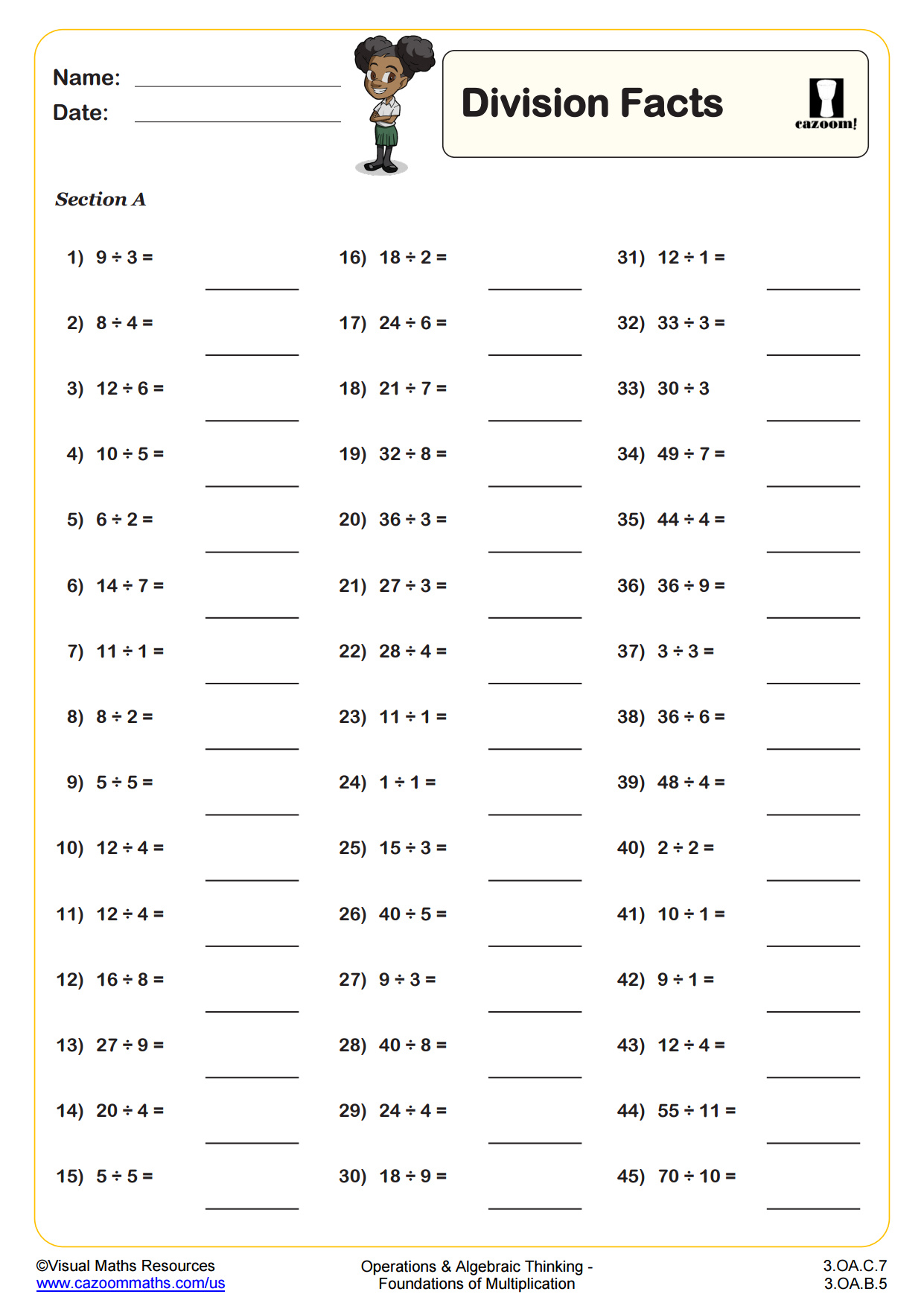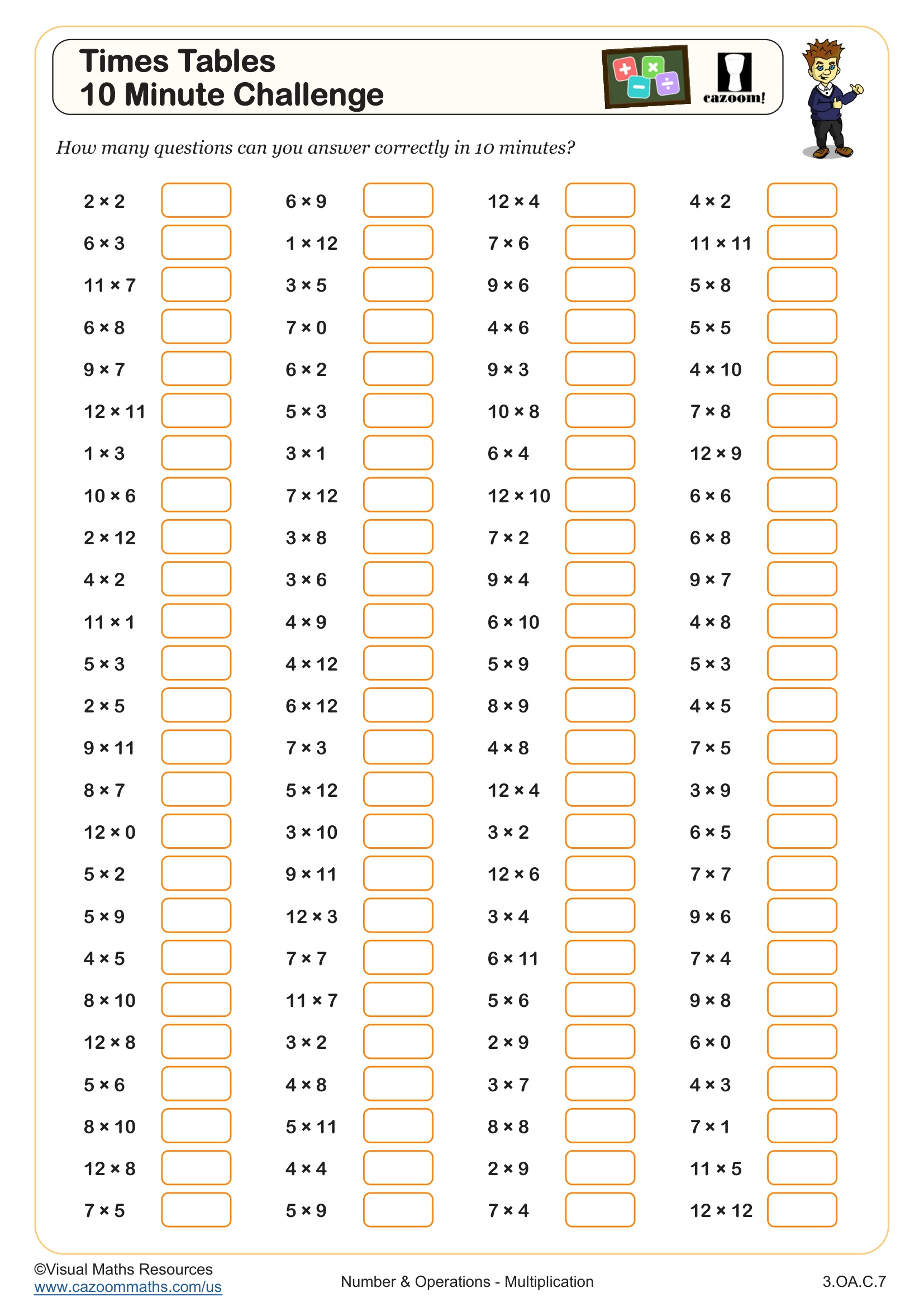Divisibility Rules (C): Combining Tests for Composite Factors WORKSHEET
Suitable for Grades: 4th Grade
CCSS: 4.NBT.B.6, 4.OA.B.4
CCSS Description: Find whole-number quotients and remainders with up to four-digit dividends and one-digit divisors, using strategies based on place value, the properties of operations, and/or the relationship between multiplication and division. Illustrate and explain the calculation by using equations, rectangular arrays, and/or area models.
Find all factor pairs for a whole number in the range 1–100. Recognize that a whole number is a multiple of each of its factors. Determine whether a given whole number in the range 1–100 is a multiple of a given one-digit number. Determine whether a given whole number in the range 1–100 is prime or composite.
Find all factor pairs for a whole number in the range 1–100. Recognize that a whole number is a multiple of each of its factors. Determine whether a given whole number in the range 1–100 is a multiple of a given one-digit number. Determine whether a given whole number in the range 1–100 is prime or composite.
Divisibility Rules (C): Combining Tests for Composite Factors WORKSHEET DESCRIPTION
This advanced worksheet builds on divisibility concepts by combining rules to test for composite number factors.
In Section A, students show that numbers are divisible by 6 by proving divisibility by both 2 and 3. They then extend this idea with factor pair reasoning for 12.
Section B asks which pairs of factors would be used when identifying divisibility for 20, 24, 36, and 45
In Section C students will find a number from given lists which are divisible by 40, 72, 56, and 33.
Lastly, in Section D students are presented with true or false statements about divisibility by 28, 24, and 99, where students must show working for each conclusion.
In Section A, students show that numbers are divisible by 6 by proving divisibility by both 2 and 3. They then extend this idea with factor pair reasoning for 12.
Section B asks which pairs of factors would be used when identifying divisibility for 20, 24, 36, and 45
In Section C students will find a number from given lists which are divisible by 40, 72, 56, and 33.
Lastly, in Section D students are presented with true or false statements about divisibility by 28, 24, and 99, where students must show working for each conclusion.
-Combining-Test-%20for-Composite-Factors.jpg?w=3840)


